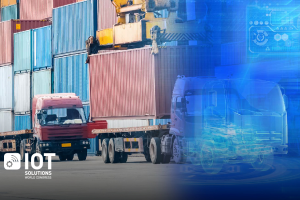The idea is not new. The concept behind Digital Twins goes back to computer-aided design representations of things, and models to evaluate “what if” scenarios. But Artificial Intelligence, advanced data analytics and IoT add a new dimension to these models.
Digital Twins are among Gartner’s top ten strategic trends for 2019. For good reason. They provide an exact digital replica of a physical object, system or process. So, when paired with engineering simulations, Digital Twins can answer “then-what” and “what-if” questions that would be expensive or difficult to pose with the physical product, says Anna Solana, Science & Technology writer and contributor, IoTSWC 2019.
As a result, they are already being adopted in a variety of industries, particularly in asset-heavy sectors, such as aerospace, oil and gas, automotive and industrial products as they enable modeling, simulations, testing and monitoring based on the data collected by IoT sensors.
Examples are numerous. Imagine that you need to know whether your device’s performance changes if you make a part with a different material, or more concretely, whether a seat in an automobile is likely to fail security tests in certain conditions. Imagine that you want to improve the positioning of factory robots in a production line and eliminate inefficient movement. Digital Twins can give you the answers you need to jump in the deep end and evolve your business.
Gartner predicts that by 2021, 50% of large industrial companies will use Digital Twins, resulting in a 10% improvement in effectiveness. It also makes clear that the focus today is on Digital Twins in the IoT. Deloitte says that the global market for Digital Twins is expected to grow 38% annually to reach $16 billion (€14.2 billion) by 2023.
New avenues to revenue
In any case, the adoption of these versatile avatars is spreading. And it does make sense as “the ultimate purpose of a Digital Twin is to enable business outcomes, be it with existing products within the established value chain, or new products and services within new emerging ecosystems”, as Deloitte’s partner Maximilian Shroeck stressed at IoT Solutions World Congress (IoTSWC) 2018.

“Digital Twins offer new avenues to revenue for enterprises either through services or new solution stacks and allow for monetisation of data and insight in completely new forms,” he said.
But where to start? Mark Gallant, senior director of IoT Solutions at PTC, put it this way: “if you’re making high complexity products at lower volume, you may certainly start with the product as a Digital Twin. If you’re making a lower complexity product at very high volume, you’re going to start with the machines and the process. So, your Digital Twin is going to start there.” Quite simply, it really depends on your business.
All in all, the whole process is a team effort as the implication of using Digital Twin technologies is equally transformational for the enterprise.
Applying human knowledge
In this sense, Teresa Tung, managing director at Accenture Labs considers that the role of human expertise is critical in fulfilling the promise of the Digital Twin. Thus, a critical phase in this technology’s maturity lies in capturing and applying human knowledge to complement AI and automation technologies.
As Mark Gallant also highlighted at IoTSWC 2018, a 30 years experienced floor manager perfectly knows when to adjust an important machine because it doesn’t sound right. His conclusion was clear: don’t be afraid to listen to what your team has to say and be prepared to address the issues raised by different parties interacting with the data.
All the more so as there will be billions of things represented by Digital Twins within the next five years. This is not a small project and it poses several challenges related to distributed data management from edge to cloud, security threads and data ethics issues. It’s not an easy feat to pull out.
Yet companies looking to stay ahead of their competitors need to consider the implementation of Digital Twins if they want to make data-driven decisions and experiment with future scenarios to drive innovation. In fact, most companies cannot afford not to have Digital Twins anymore, says Teresa Tung. In a sense, this might change the very definition of a product, but this is another matter.
The author of this blog is Anna Solana, Science & Technology writer and contributor to IoTSWC 2019
Comment on this article below or via Twitter: @IoTNow_OR @jcIoTnow










